(Part 39 of 46 in series, Level 52 countdown)

Frankly, if I just walked every day it’d probably be a win. :) Tomorrow: should probably include some actual running though.
(Part 39 of 46 in series, Level 52 countdown)

Frankly, if I just walked every day it’d probably be a win. :) Tomorrow: should probably include some actual running though.
(Part 38 of 46 in series, Level 52 countdown)

Still nursing my achilles from sprints. Really didn’t feel like I was running that hard… must have not warmed up sufficiently.
(Part 32 of 46 in series, Level 52 countdown)
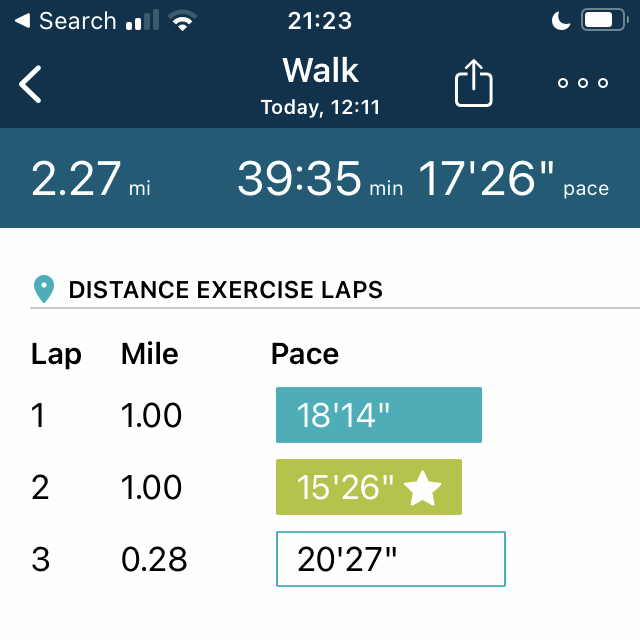
Walked to my fave cafe for lunch. I’m not sure I’ve every accurately tracked this walk before. I was thinking it was just short of 2 miles; apparently I’ve been underestimating. Regardless, happy to walk 4.5 miles to see familiar faces and have a yummy sandwich.
(Part 26 of 46 in series, Level 52 countdown)

Final day before heading home. Found these two neat buildings; note the color of the glass windows on the left one. Tomorrow: A day of traveling.
(Part 24 of 46 in series, Level 52 countdown)
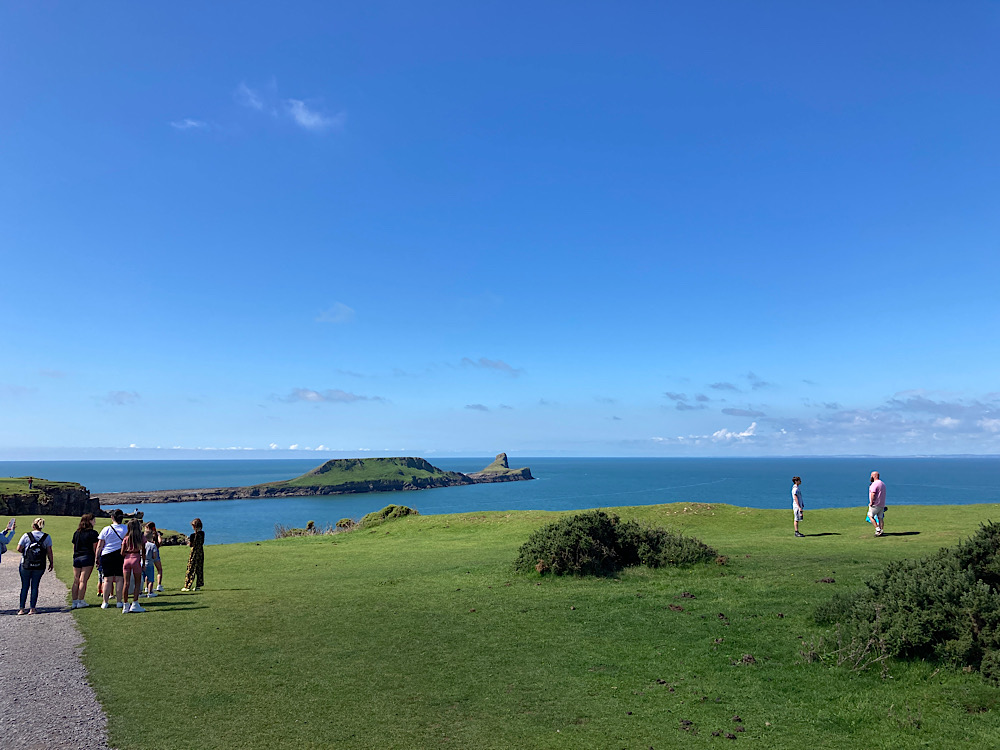
Another day of perambulation visiting Rhossili in glorious weather.
(Part 19 of 46 in series, Level 52 countdown)
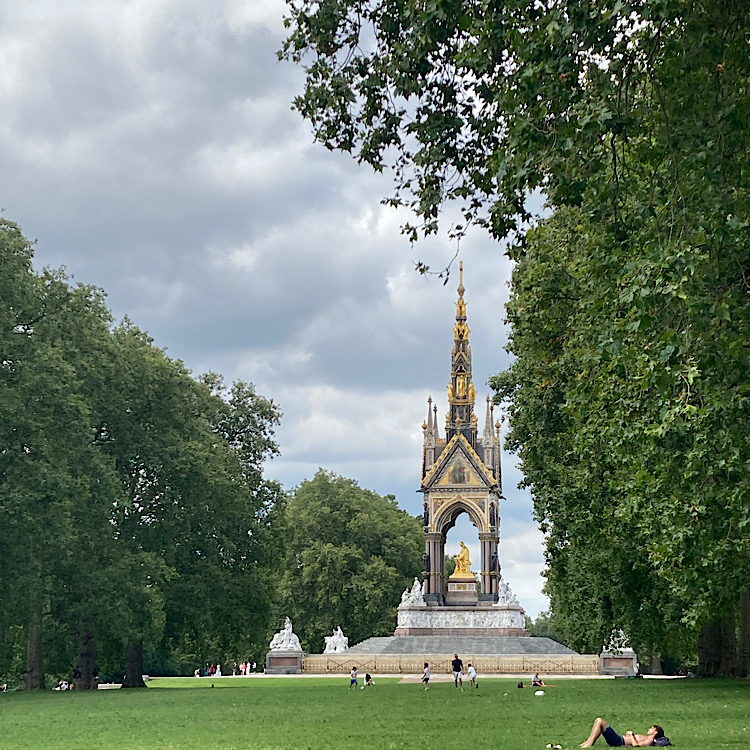
I love to stroll around, and did miles of wandering around London. Friday’s activity will be day one of Rendezvous.
(Part 15 of 46 in series, Level 52 countdown)

Active recovery day. Oof, pebble wrestling always pays off. Tomorrow: A loop of our usual trail run.
A few years ago, I read an article, Walking, by Steve Kamb about walking to Mordor and I set out to walk the round-trip 3,871 miles.
It’s 1,779 miles to get from Hobbiton to Mt. Doom. Then riding the eagles back to Minas Tirith cuts the return walk to Bag End down to 1625 miles. Plus 467 more miles, roundtrip to Grey Havens. Brings my total goal to 3,871 miles. This is roughly the entire length of the Nile river, or the distance from the surface to the center of the Earth. (Mid 2019 I’m a few hundred miles from Mt. Doom.)
https://constantine.name/2019/06/23/§10-walking-to-mordor/
As best I can tell, in 2014, I had already started walking the ~4-mile round-trip to my office, and I was using walking in general to improve my fitness for some specific parkour events I was planning to attend. When I found this challenge, I looked back through all my journals and estimated how far I’d already walked. In November 2016, when I took up the Mordor challenge, I noted that I had already walked 124 times for a total of 496 miles.
As I mentioned, walk number 500 turned out to be just 8 miles short of Mt Doom. But really, I’ve only been estimating my mileage based on measuring some common walking routes and counting the walks. So this is an amazing confluence of walk-number and mileage. So at this point, I’m going to stop keeping track of the mileage. (I do still keep track of general activity each day, so I still note “walk” when I do so.)
Take-aways?
Well, I think it’s amazing how far you can get—figuratively and literally—with small daily progress. Also, I think it’s very good for me mentally, given where I am at the end of 2019, to stop tracking this goal. It makes for one less thing on my mind.
I’m hoping that walking is now a way of life. I will note that I think absolutely nothing of walking a few miles. I’ve walked miles with a 40-pound backpack, (in minimalist sneakers.) I’ve walked 2 miles carrying 20 pounds of vegetables farmer-carry-style. I’ve fixed my back. I’ve fixed my feet.
Walk on!
ɕ
(Part 10 of 13 in series, Changes and Results)
Many moons ago I had frequent back problems. There were many things which provided me temporary relief, but this is not an article about temporary relief. This is an article about one of the things which actually fixed my back: Walking.
(Losing weight and fixing my feet are the other two things.)
I recall Ido Portal saying in a podcast with Daniel Vitalis, something to the effect of: Your spine is for orienting yourself in your environment. Your spine’s myriad of joints should be flexible and powerful. At that point in my journey, I wasn’t even really thinking of my spine as joints; It was simply something with an upper and lower portion, both of which were frequently in significant pain. That was the exact moment when I became convinced my spine was weak.
…and then I read _Walking Found to Provide Significant Relief from Back Pain. At the time, I was preparing for a parkour trip to Québec for an event they where having with the Yamakasi. So I was already focused on finding my weaknesses—my back!—and trying to fill them in.
…and then I read Walking, an article by Steve Kamb about walking to Mordor. Yes, that Mordor. It’s a challenge to walk 1,779 miles (but see below.) I took my exercise tracker out on a few of the common walks I like, and noted the mileage. I’ve been keeping track of the total ever since.
It’s 1,779 miles to get from Hobbiton to Mt. Doom. Then riding the eagles back to Minas Tirith cuts the return walk to Bag End down to 1625 miles. Plus 467 more miles, roundtrip to Grey Havens. Brings my total goal to 3,871 miles. This is roughly the entire length of the Nile river, or the distance from the surface to the center of the Earth. (Mid 2019 I’m a few hundred miles from Mt. Doom.)
There’s so much that can be said about walking. But rather than read more about walking, why not go for a walk?
ɕ
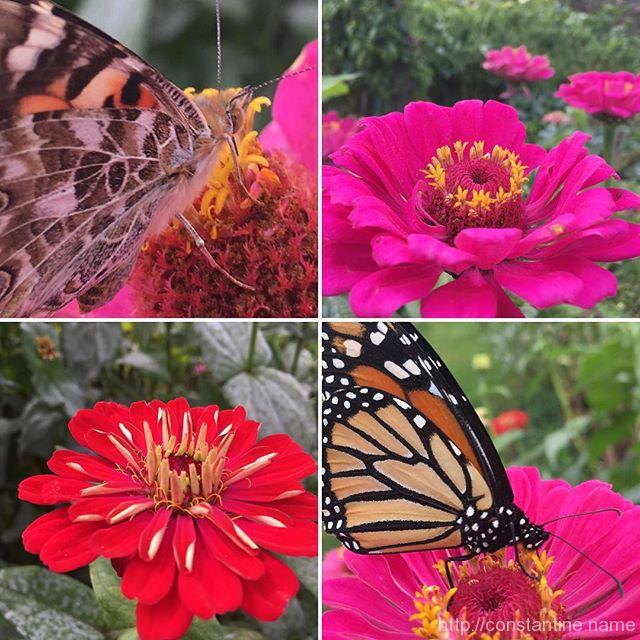
(Part 68 of 104 in series, 100 Days of Training (2017))
long walk to/from lunch with a stop at out veggie plot in the community garden. Some people plant flowers to attract the polinators into the garden. Here’s Cosmopolitan (or Painted Lady) and a classic Monarch. MUCH nicer than a lame shot of me. :) #nofilter on these either.
ɕ
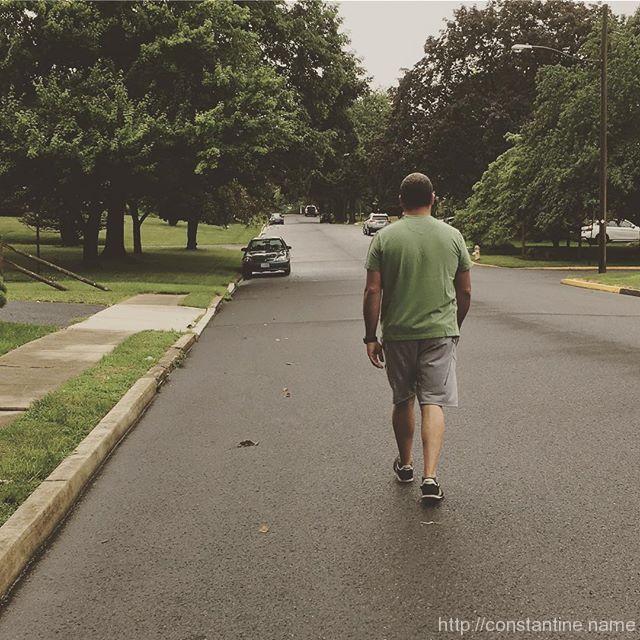
(Part 5 of 104 in series, 100 Days of Training (2017))
Tracy and I are off to walk a two mile loop with a stop to weed our plot in the community garden and harvest some tomatos! #artdudeplacement #100days https://constantine.name/100days
ɕ
Jamie Holmes joins Craig to discuss life’s admin tasks, her journey through holistic healing from melanoma, and insights into the world of circus arts and personal fitness showcasing her multifaceted life and philosophies.
I think it was three months from when I had my first, initial consult with my surgeon, and he said, “okay I can get you in. It’s going to be a bit harder because you’re doing both hips at once, but I can get you in within three months.” And that was horrid to me! I was like, “I have to live three more months like this!?” It wasn’t just that it hurt a little bit when I walked— I couldn’t move— I could not move— I was having weird panic attacks all the time, because if I dropped something and had to bend over, it was— I’m a bit of a tough cookie, but that? That broke me pretty hard.”
~ Jamie Holmes, 35:15
Not your average bears, Craig and Jamie begin in left field discussing ways of managing life’s “admin” tasks. Jamie professes integrating everything into her daily flow, rather than reserving them for a single day. Her approach, she explains, allows her to work at a high speed, avoiding the buildup of dreaded tasks. Her method emphasizes efficiency and the mental ease that comes from staying ahead of administrative duties, reflecting a deeper understanding of personal productivity and time management.
The conversation shifts into Jamie’s profound journey through holistic healing after a melanoma diagnosis. Rejecting traditional treatment paths, Jamie opts for a holistic approach, guided by her conviction in the body’s healing capabilities and her passion for health and fitness. This segment of the discussion not only highlights her resilience but also serves as an inspiring testament to the power of our minds and bodies.
Jamie also shares insights into the world of circus arts and her studio, The Circus Fix, illuminating the challenges and rewards of managing a fitness and arts studio. Her narrative encompasses the delicate balance of artistic passion with the pragmatism of business management, underscoring the significance of adaptability and understanding in leadership roles.
Takeaways
Efficiency in daily tasks—integrating administrative duties into everyday life can enhance productivity and reduce stress.
Holistic healing approaches—exploring non-traditional methods for dealing with serious health issues, such as melanoma, can lead to personal insights and unexpected journeys.
The importance of movement—engaging in physical activities, whether through circus arts or other forms of exercise, is vital for mental and physical health.
Adapting to individual needs—understanding and accommodating the unique ways people process and work can lead to better management and teamwork.
The value of outdoor activities—spending time in nature, particularly in activities like walking on the beach, can serve as a form of meditation and rejuvenation.
Facing life-changing decisions—confronting severe health challenges with courage and openness to unconventional treatments can inspire others.
The challenge of balancing—managing a small business, especially in the arts, requires juggling creative passion with the practicalities of administration and leadership.
The role of community—creating spaces for learning and growth, such as a circus studio, contributes to the well-being and development of both instructors and students.
Personal transformation through adversity—overcoming physical and mental hurdles can lead to profound personal growth and a deeper understanding of one’s capacities and resilience.
Resources
The Circus Fix — Jamie Holmes’ circus studio, offering classes in aerial arts and other circus disciplines.
https://jamieholmes.com — Jamie’s web site with all her professional details.
Carrots, Coffee, and Cancer — Jamie’s book recounting her approach to overcoming melanoma, emphasizing diet, lifestyle, and alternative treatments.
Instagram — @jamie7holmes and @thecircusfixto
Surrounded by Idiots — by Thomas Erikson as briefly mentioned in this episode as a resource in relation to understanding team dynamics.
(Written with help from Chat-GPT.)
Anna Bezuglova transforms the mundane into sacred practice, challenging our perceptions of daily life and movement with insights from her unique journey and teaching philosophy.
“The dialogue of sacredness of deep meaning is something that is often connected to daily things. It’s not only the physical practice that I treat in such a way but also just daily moments and living life. Being present to it all the time— and it doesn’t matter whether I’m doing an official session of practice, or I’m driving a car, or I’m talking to my husband, or I’m teaching a class, or I’m just walking down the road. I think this mindset shifts something in the way you do things day to day.” ~ Anna Bezuglova, 3:00
In a deeply reflective conversation, Anna describes how she treats daily practices as sacred, a wisdom imparted by her Zen teacher. She shares her journey of recognizing the sacredness in her routines, initially performing practices that outwardly seemed sacred to others but later realizing their intrinsic value to herself. Anna emphasizes the importance of being present in every moment, whether it’s in a structured practice session or the simple acts of daily living, highlighting how this mindset transforms the mundane into something deeply meaningful.
Anna’s reflections extend into the lessons learned from her father, a martial arts teacher and a Buddhist, who, despite never directly teaching her martial arts, deeply influenced her perspective on life and practice. She recounts growing up in the challenging times of the 1990s in Russia, drawing resilience and a unique outlook from her parents’ examples. This background informs her teaching philosophy, where she advocates for a holistic approach to movement that intertwines physical, cognitive, and emotional aspects.
Anna argues for the significance of continuous change, consistency, and awareness in practice, underlining how these elements contribute to a fulfilling and transformative journey. Through her narrative, she challenges listeners to see movement not just as physical exercise, but as a comprehensive method to engage with life, fostering change, and personal growth.
Takeaways
The sacredness of daily practice — a reflection on how integrating conscious intention into routine activities transforms them into meaningful practices.
The influence of upbringing — discussing how parental examples, especially in the face of adversity, shape resilience and perspectives on life and practice.
The concept of change in practice — emphasizing that constant evolution and adaptation in one’s practice mirrors the dynamic nature of life itself.
The importance of awareness — highlighting how paying attention to the body’s movement and presence in space can significantly improve one’s practice and overall well-being.
The role of a teacher — the necessity of embodying the principles one teaches, as coherence between words and actions fosters trust and facilitates learning.
The power of coordination — explaining how developing coordination through movement practices can enhance the ability to adapt and succeed in various aspects of life.
The commitment to long-term learning — advocating for the importance of dedication and persistence in practice to experience genuine transformation.
Resources
Having a Practice — Anna’s blog post mentioned by Craig.
The Bamboo Body — Anna Bezuglova’s movement school in Barcelona based on Ido Portal teachings.
@anna.bamboo — on Instagram
The Bamboo Body — on YouTube
Feldenkrais Method — A movement pedagogy designed to improve body awareness and enhance movement efficiency through gentle exercises and mindful practice. The method was developed by Moshé Feldenkrais and is used worldwide to assist in rehabilitation and promote physical and mental well-being.
Ido Portal Method — A holistic approach to movement culture pioneered by Ido Portal, focusing on developing strength, mobility, and the physical and mental aspects of movement practice. It encourages exploration of various disciplines, from martial arts to dance.
(Written with help from Chat-GPT.)
I can go for walks with others, with music, or with podcasts, and those things usually crowd out my frenzied thoughts and internal monolog. But it’s much better when I manage to leave enough space for my thoughts to settle. Wrestling with my own thinking just gets us both of us riled up.
This practice teaches you that you don’t need to address every instance of mental talk you have. In fact, your thoughts will never leave you alone if you try to resolve every train of thought that arises. Instead, you can just enjoy the world as it reveals itself before you.
~ David Cain from, https://www.raptitude.com/2023/10/how-to-make-your-mind-maybe-one-third-quieter/
Serenity is to be found when walking truly alone—not even accompanied by one’s own thoughts.
ɕ
Julie Angel describes her multifaceted approach to movement, breath–work, and life as ‘everything everywhere all at once,’ revealing a seamless blend of creativity, transformation, and minimalism in her practices.
I’m really lazy. I’m a high performance slacker. And so it has to be simple and minimalist in doing it. If there’s any practice where it’s like: You need to buy all of this equipment, and you need to do all of these things, and you need a membership… I’m just like, no no that’ll be a no. All of those things cause friction points for me, and I don’t do them. So I mean there’s a minimalism, a simplicity, a creativity, and an adaptability; which is why to other people it may seem very different that I I wear all these these hats which I’m equally multi-passionate about. But for me I’m like, same same. [ed: It’s all the same.]
~ Julie Angel, 2:50
Julie Angel and Craig dive into the worlds of movement, breath-work, and the emotional landscape of physical practice. Julie shares her holistic view on movement, emphasizing that everything she does—whether it’s filmmaking, practicing parkour, training others, or walking her dog—interconnects through common threads of exploration, transformation, curiosity, and creativity. The absence of division between her various interests, highlights the blending of her professional and personal pursuits that are driven by a consistent creative spark and a quest for simplicity and minimalism in practice.
Julie also introduces the transformative power of breath–work, recounting her journey from being intrigued by MovNat Aquatics courses to exploring the physiological and psychological impacts of breathing techniques. She discusses her discovery of dysfunctional breathing patterns and how addressing these can profoundly affect one’s health, well–being, and movement capabilities.
Julie’s exploration into breath–work is not just a personal quest but also an educational endeavor, as she aims to share this knowledge through her work, showcasing the significant, often under-appreciated role that breathing plays in enhancing movement, reducing anxiety, and improving overall life quality.
Takeaways
Exploring the interconnectedness of activities — how different aspects of life, from professional endeavors to personal hobbies, can intertwine and inform each other, creating a seamless blend of experiences.
The significance of creativity in movement — discussing how a creative element is vital for engagement and passion in practices like parkour and breath–work, emphasizing the role of creativity in sustaining interest and exploration.
Breath-work as a transformative tool — highlighting the journey into breath-work and its profound impact on mental and physical health, from enhancing movement capabilities to reducing anxiety and improving overall well-being.
The emotional aspect of movement — exploring movement not just as a physical activity but as an emotionally charged experience that can influence thoughts, actions, and overall life quality.
Simplicity and minimalism in practice — the importance of adopting a minimalist approach to practices, avoiding over-complication to maintain focus, enjoyment, and consistency in various activities.
The role of breath-work in functional movement — detailing how efficient breathing patterns can significantly enhance movement quality, recovery, and performance, underpinning the foundational role of breath-work in physical practices.
Addressing dysfunctional breathing patterns — uncovering the widespread issue of dysfunctional breathing and its implications, with strategies and insights into how correcting these patterns can lead to significant health and performance benefits.
The impact of mindset and perception on physical health — discussing research on the mind-body connection, emphasizing how one’s mindset and perceptions can tangibly affect physical health and aging.
Resources
https://julieangel.com — Julie Angel’s website offers insights into her work with movement and breath–work, including courses and resources for those interested in exploring these areas further.
Julie Angel — Julie on LinkedIn.
The Mindful Body by Dr. Ellen Langer — A book discussing the power of the mind over the body, including the famous Counterclockwise study, which explores concepts of mindfulness and placebo effects on health and aging.
Environment, ‘natural movement,’ and breathing — Movers Mindset podcast episode with MaryBeth Gangemi.
https://fitomize.ca — Julie Thom, trauma informed movement & life coaching.
Built to Move by Kelly Starrett and Juliet Starrett — This book emphasizes the importance of movement and breathwork as foundational elements for health, detailing practical strategies for improving physical and mental well-being.
https://oxygenadvantage.com — Oxygen Advantage program focused on improving health and performance through specialized breathing techniques that aim to optimize oxygen and carbon dioxide levels in the body.
https://vicverdiercoaching.com — Vic Verdier, a MovNat Aquatics instructor known for his deep cave and wreck diving records, Verdier’s teachings on breath–work highlight the importance of understanding respiratory chemistry for enhanced movement and health.
How to Keep Your Edge as You Get Older — Podcast episode with Vic Verdier, mentioned by Craig in this conversation.
https://www.movnat.com — MovNat is a physical education and fitness system based on natural human movement skills, aiming to improve strength, mobility, and the ability to perform practical tasks.
https://www.wimhofmethod.com — Wim Hof Method is a combination of cold therapy, breathing techniques, and commitment that has been claimed to contribute to physical and mental wellness.
(Written with help from Chat-GPT.)
It matters that I start something. I don’t have to start everything; That’d be tragic. I don’t have to start many things, nor even more than one thing. But it matters that I start something. The knowledge is in the doing of that something. It matters that I go through contemplation (choosing just the right something), then into commitment, and then… that’s where I often struggle.
I’d like to propose a different view: that struggle is the place of growth, learning, curiosity, love, creativity. Struggle is an incredible opportunity for being creative.
~ Leo Babauta from, https://zenhabits.net/struggle-to-creativity/
I struggle when there’s a huge gap between the know-naught starting point, and my being one of those effortless creatives who get stuff done. Those who get stuff done well and demonstrate craftsmanship and care and pride and joy! (Gazing at the horizon,) there’s the thing. I know what it can be. I see how to begin, but I see hills and I know there will be challenges. Don’t turn away. (Gazing at the horizon,) if there’s somewhere I want to be, I need to start walking.
ɕ
There are several ways to think about what might constitute the sixth sense. Because there’s a lot of stuff that we equipped to detect— electrical fields, magnetic fields, ultra-low frequencies, ultra-high frequencies, and infra-red to name a few off the cuff. Our brains are amazing sense-making hacks, and there (as far as I know) are multiple layers of mind “running” at the same time. We are literally swamped with information through so many mediums, and our brain is continuously and completely embodied into that information. Doesn’t it actually make more sense that we have “this vague sense that…” for any sixth-sense sort of experience we describe? What’s the alternative? …to have a myriad of explicit sensations that we only very rarely encounter? I think it makes more sense for to have a “vague feeling of…” as a way to experience the other, less-experienced parts of our physical abilities.
A hidden sense of smell might account for the mysterious sixth sense and a universe of subtle knowledge about the world.
~ Elizabeth Preston from, https://aeon.co/essays/how-our-sense-of-smell-works-as-a-mysterious-sixth-sense
The question I have—sorry, I always have questions, never answers—is: Now that I know that my sense of smell is better than I thought it was, does that mean that my sixth sense improves? (In the same way that walking around barefoot eventually improves your ability to balance without having to actually work on that skill.)
ɕ
I am often stuck in the resistance right before actually writing. It usually takes me several attempts to approach the work. It feels like walking up the slippery slope of a small hill, where the initial speed and direction has to be perfect, and then with continued effort—a penguin waddling judiciously—I reach the gently rounded top of the hill (after sliding off obtusely a few times and beginning again.)
I can easily be nudged into sliding off that small hill by distractions. I’m drawn to address the distraction. Can I fix that so it doesn’t happen again? (For example, change fundamentally how my phone is configured.) But I know that distractions are not all bad and I know that I can hide in the busyness of getting things just right. (Hazards warned of by both Pressfield and Godin.)
Besides that, if you want to get anywhere interesting, there’s no substitute – not even talent – for grinding away at something year after year until you’ve put more work into it than almost anyone else alive.
~ Cierra Martin from, https://www.gapingvoid.com/what-is-your-practice/
The word grinding feels too negative a way to spin simply doing the work. If I think, “that’s going to be grinding,” I’m setting myself up to more easily slide off that little hill. Because invariably—for the things I have to, and want to, do—the actual work is exceedingly easy. Easy like gleeful skipping. All of the hard part is in the way I think about the work before I ever begin. Even using the word “work” feels too negative. All of the hard part is in the way I think about the practice.
ɕ
Taking a break is really difficult. A short break is often easy enough if you’re comfortable simply ignoring everything… for 10 minutes. But if you really want to take a real break, the difficulty escalates rapidly. I recently spent a long weekend camping a short, walkable distance from the beach. Each of the three full beach sitting days I tried to lengthen the stretches of time I literally sat in a beach chair without getting up. By the third day I was feigning agitated exasperation, and making jokes like, “That’s it! Today I’m getting serious about holding my chain down in the sand. No more standing up for me!” But in reality, I was bumping up against bodily functions, sun exposure (even under a magnificent umbrella), and peer pressure from my beach pals warning me of deep vein thrombosis. (I hope you never know what that is.)
I’m only half kidding. Everyone talks about taking a day off from work, and about looking forward to the holidays (for family and experiences, sure— but we all mean for the break we pretend we’ll get, but never do.) We even have a dedicated word, staycation (a word so legit it even passes my spell–checker) for suggesting some days we’re taking but not even going anywhere, just because we need a break. Our phones ring, our apps go bee-BOOP! and it’s ping! notification this, and ding! notification that. And an email arrives, and the dog needs walking, and the children need this, and the housemate that…
The hard work is actually prioritizing, pruning and putting one’s life in order. The impossible work is getting sufficient duration, and premium quality, sleep.
Taking a break isn’t lazy – learning to recharge is a skill that will allow you to enjoy a more creative, sustainable life.
~ Alex Soojung-Kim Pang from, https://psyche.co/guides/how-to-rest-well-and-enjoy-a-more-creative-sustainable-life
What’s that? How long did I manage to sit in the chair? On day three I managed a transcendental 5-and-one-half hours of literal sitting, toes in the sand. And I was on a roll, no where near needing to arise, having perfectly judged my fluid consumption, sweating, and kidney function up to then. I was foiled by my beach mates forcing me out of the chair (and at least part way into the ocean.) Which, all things considered, was very nice of them.
ɕ
(Part 40 of 46 in series, Level 52 countdown)
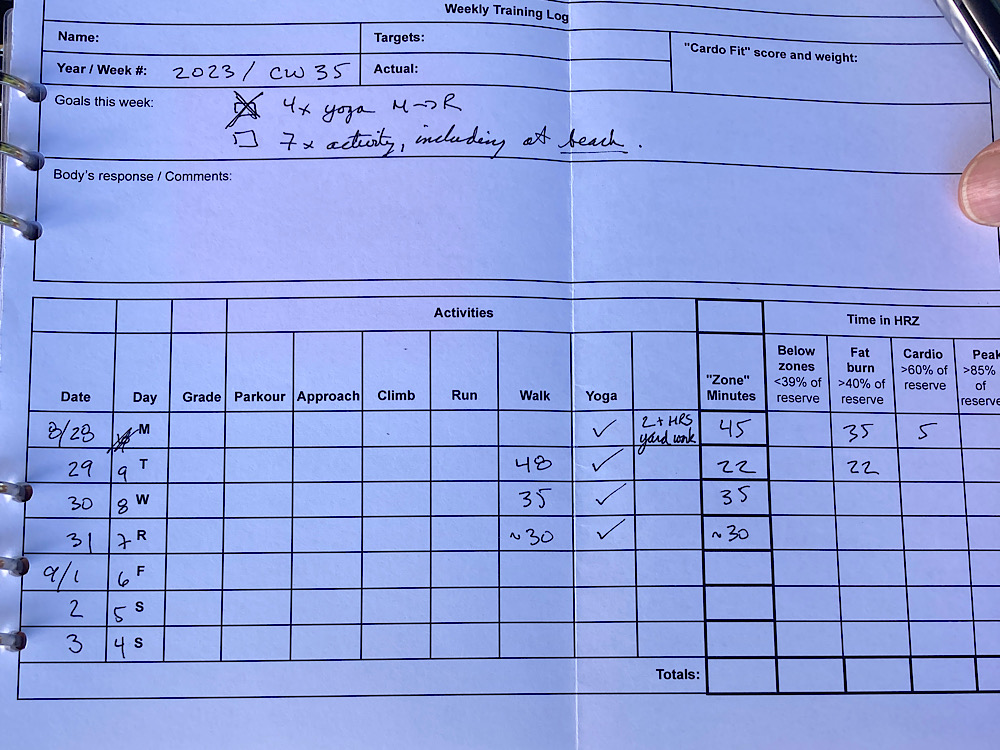
Amazing weather today. Still walking. The part I most dislike about doing these many-day activity challenges is taking a photo. Here’s a photo of the sheets I use to track activity and goals.